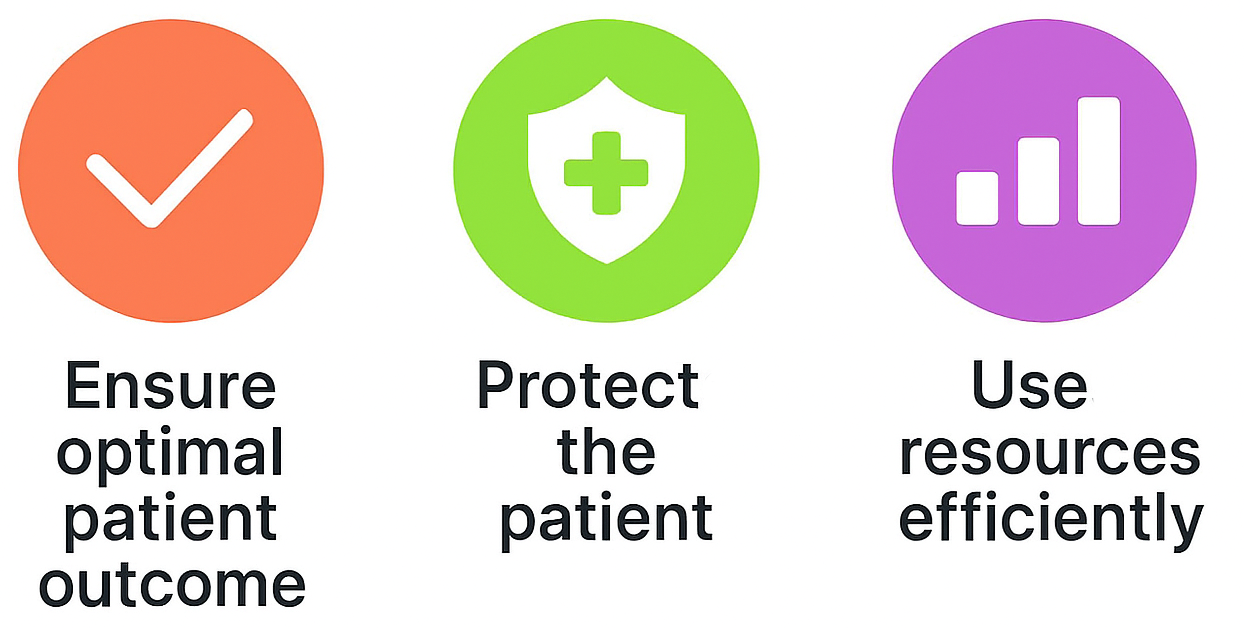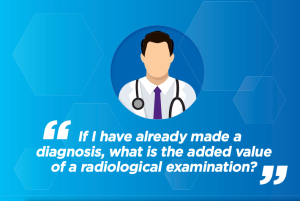Getting the right image for my patient

This initiative aims to improve patient care, ensuring each patient receives the most appropriate and justified imaging procedure, enhancing diagnosis and treatment outcomes.
In this video, we hear from some of the different parties involved in radiological imaging procedures (competent authorities, radiologists and referrers) about what is important to consider when deciding whether a procedure is appropriate or not and how to encourage dialogue between medical practitioners and patients.
- HERCA: Katrien van Slambrouck and Jean-Luc Lachaume
- European Society of Radiology: Boris Brkljačić
- Choosing Wisely Norway: Stefán Hjörleifsson
High-quality referrals

A recent European project, called EU-JUST-CT, concluded that:
- Up to 40% of CT examinations in some European countries were inappropriate.
- Availability of imaging referral criteria is crucial to support justification.
- Referrals do not always contain all the necessary information.
A tool kit for referrers with 7 key questions and responses for use in dialogue with the patients
Referral Guidelines
- help healthcare professionals select the most appropriate imaging technique for each individual patient and for each clinical question,
- are an essential tool in diagnostic radiology,
- should be available and used,
- help ensure that imaging procedures are appropriate,
- should be integrated into Clinical Decision Support systems,
- reduce the number of unnecessary examinations, minimising patient exposure to radiation, and optimising the use of resources.
There are several referral guidelines available and some examples are provided here:
- iRefer
- iGuide
However, each country should decide on and implement the referral guidelines to be adopted on a national level


Education and training (E&T)
- Appropriate E&T of healthcare professionals in the right and effective use of referral guidelines is crucial to improve evident based decisions and patient outcomes.
- Continuous E&T ensures that these tools are utilised optimally, maximising their benefits in clinical practice.
- Online courses are available for healthcare professional regarding the effective implementation of referral guidelines. The ESR tutorial on referral guidelines is one example.
Further information on the importance of justification is available in the HERCA Position Paper on Justification of Individual Medical Exposures for Diagnosis (2014).
Countries participating in this campaign:
Where to get more information
Information for health care professionals referring patients for imaging procedure
- Medical Imaging: The right test at the right time, IAEA
- Radiation Protection of Patients - information for health professionals, IAEA
- Online training in radiation protection | IAEA
- Medical X-ray imaging, Information for referring professionals, FDA
- Information for referring professionals, ESR Eurosafe imaging
- EuroSafe Imaging Tutorial on Referral Guidelines, ESR online course for referrers
- Projected lifetime Cancer Risks from Current Computed Tomography Imaging
- Implementation of a multicomponent intervention including clinical decision support (CDS), e-course and feedback to improve general practitioners’ radiology referrals: a feasibility study and study protocol | BMJ Open Quality
- Improving Radiological Services IROS from low-value care to effective high-value services - Cristin
Information for health care professionals referring paediatric patients for imaging procedure
- Paediatric imaging - information for referring physicians, Imagegently
- Paediatric imaging - information for the parents, Imagegently
Referral guidelines
- iRefer, Referral Guidelines
- Clinical Decision Support ESR iGuide, Referral guidelines
- EuroSafe Imaging Tutorial on Referral Guidelines, ESR online course for referrers
Communicating with patients and information for patients
- Communicating radiation risks in paediatric imaging: Information to support healthcare discussions about benefit and risk
- Communicating radiation risks in paediatric imaging, WHO
- What patients can expect from their imaging examination, IAEA
- Radiation and patients, what patients should know, ESR Eurosafe imaging







 Belgium
Belgium Czech Republic
Czech Republic
 Denmark
Denmark
 Estonia
Estonia
 Finland
Finland
 Greece
Greece
 Hungary
Hungary
 Iceland
Iceland
 Ireland
Ireland
 Italy
Italy
 Latvia
Latvia
 Lithuania
Lithuania
 Luxembourg
Luxembourg
 Norway
Norway
 Poland
Poland
 Romania
Romania
 Slovenia
Slovenia
 Spain
Spain
 Sweden
Sweden
 Switzerland
Switzerland The Netherlands
The Netherlands